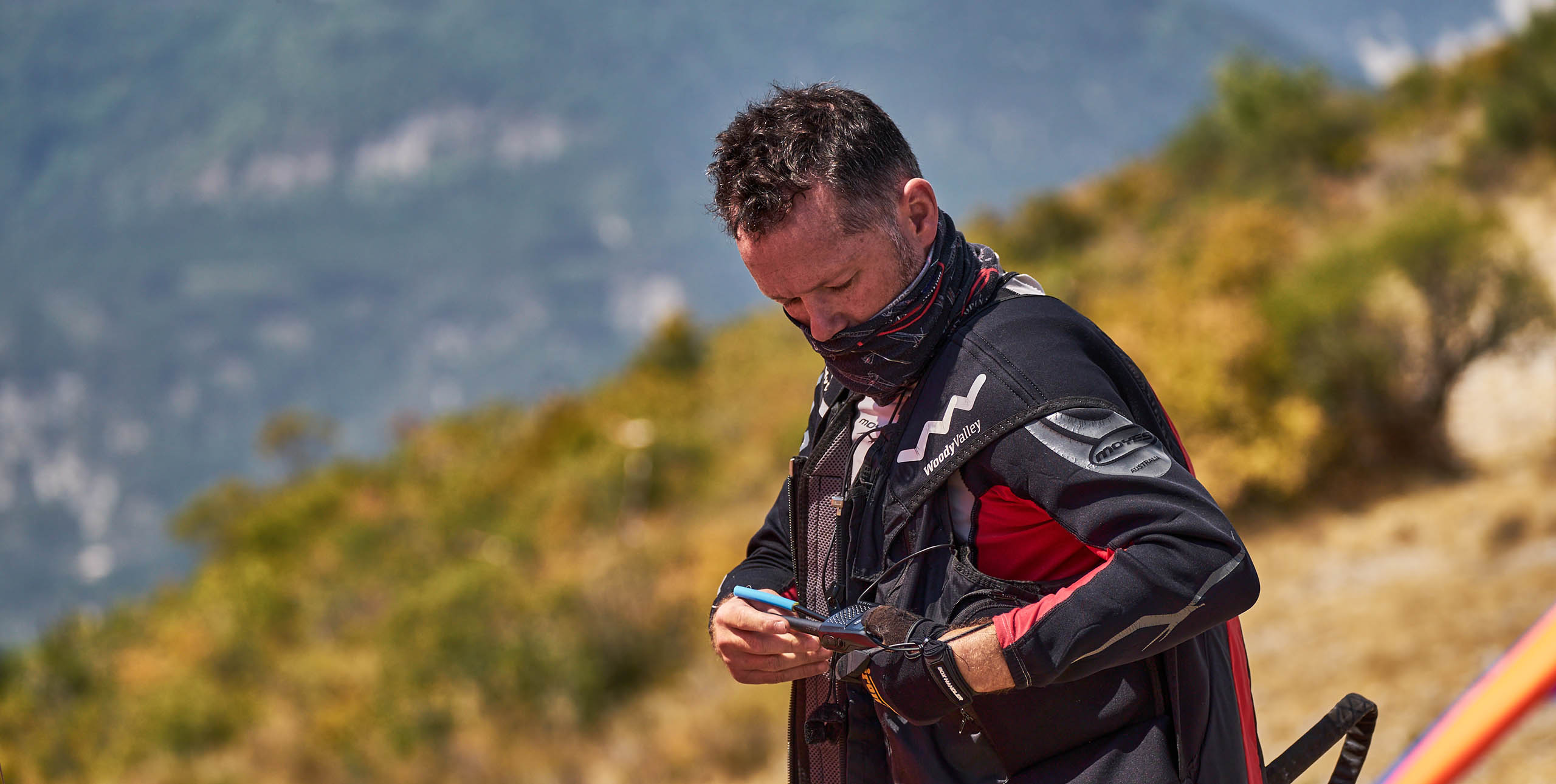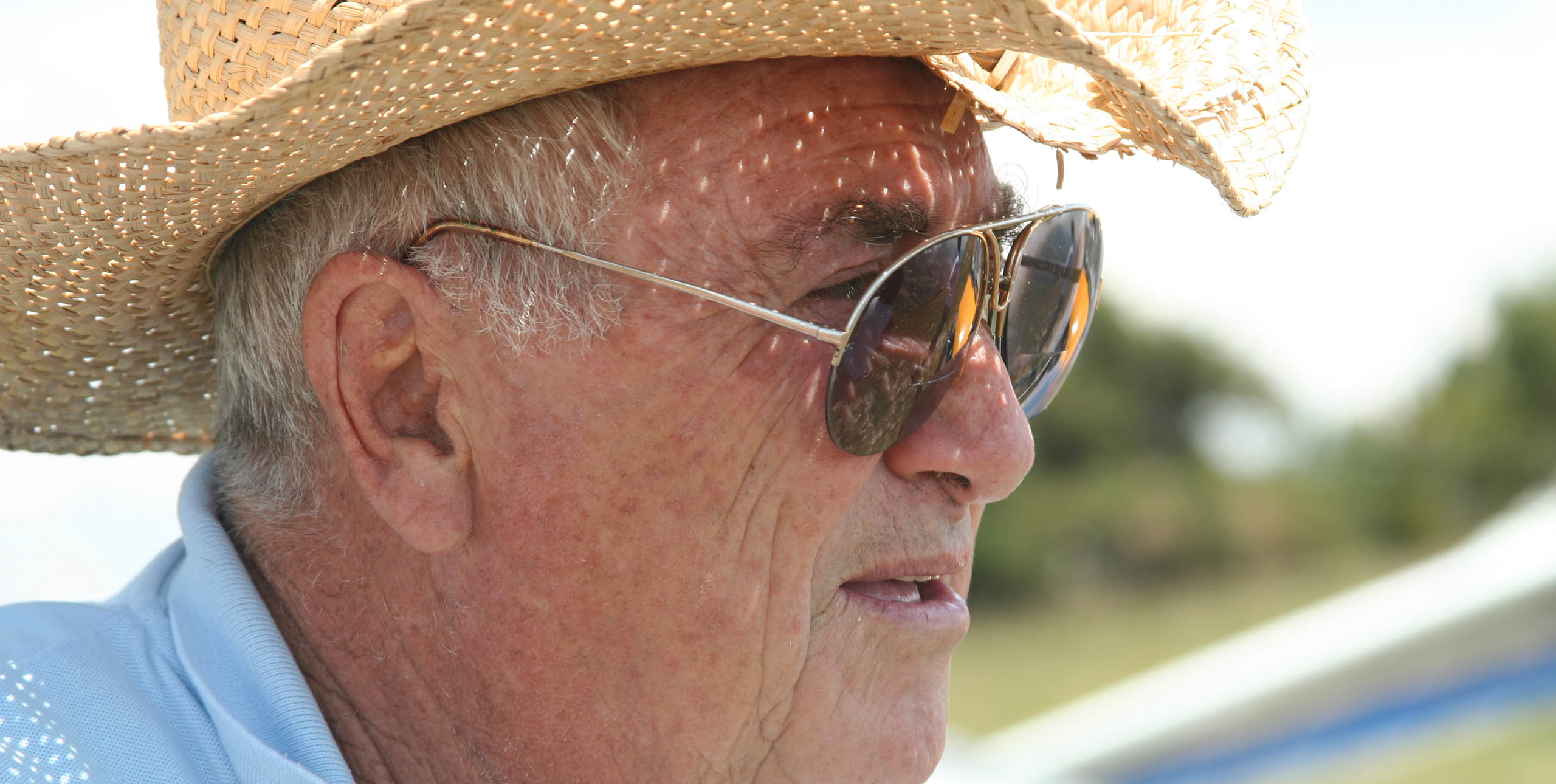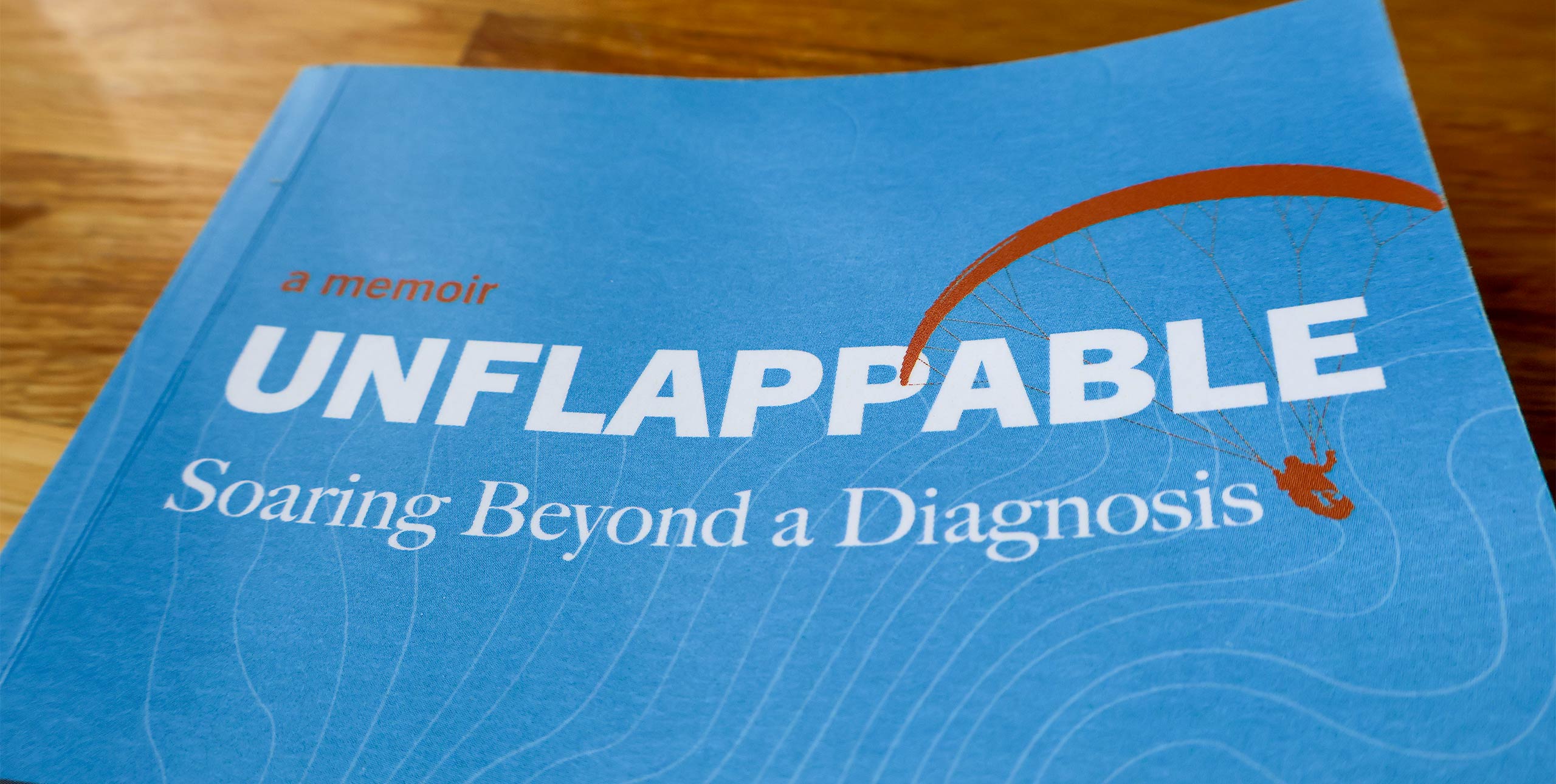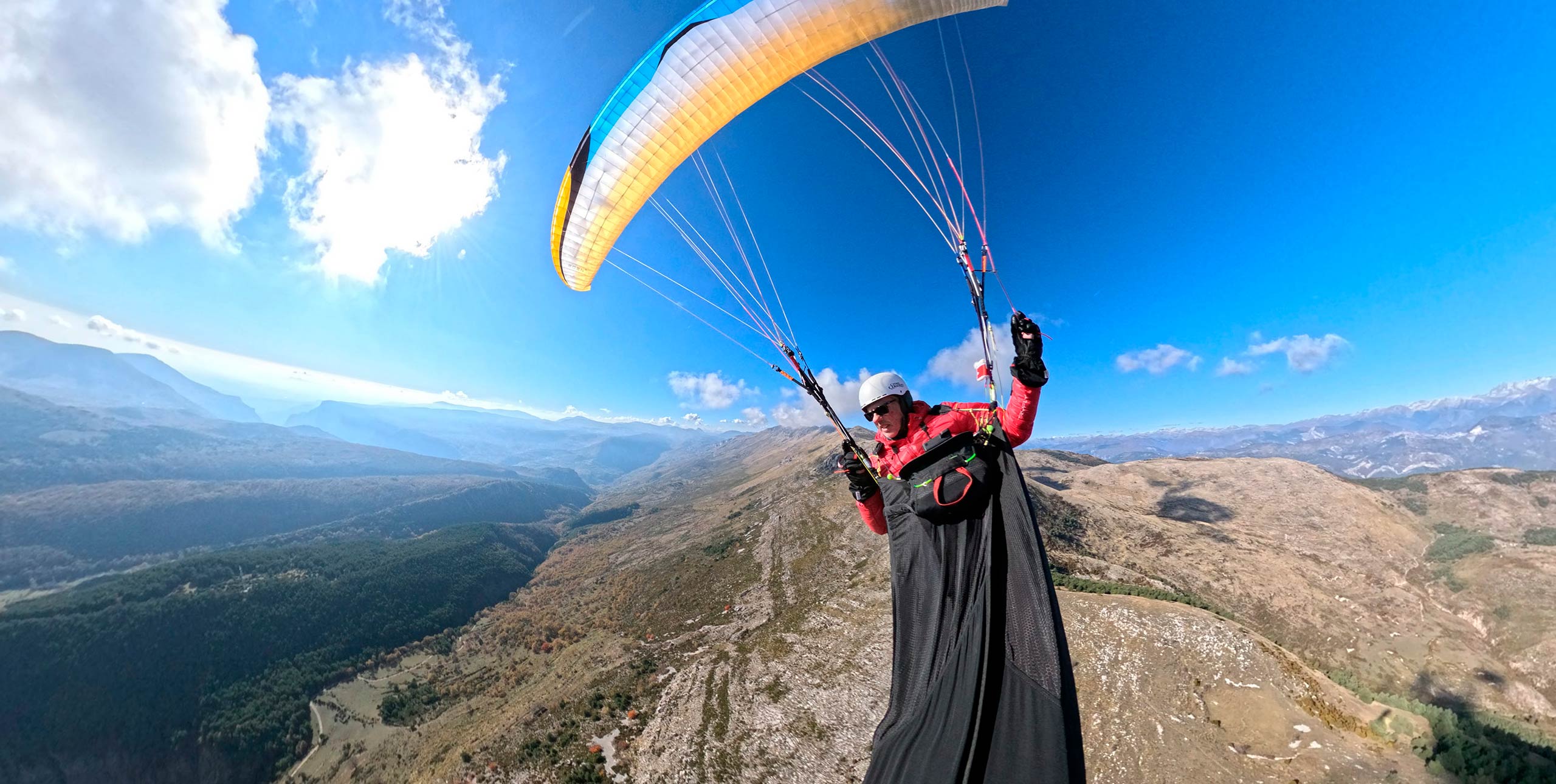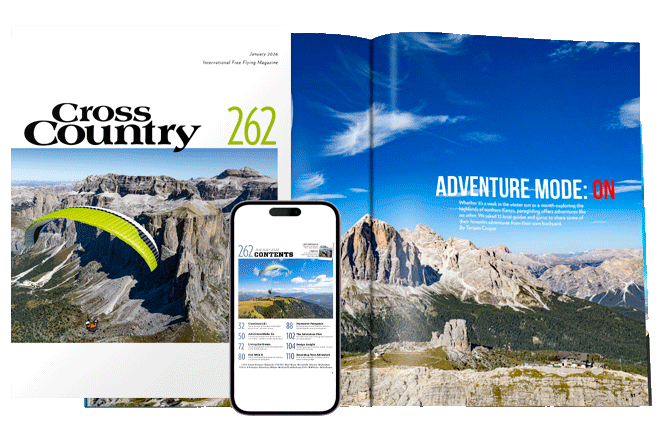Go get ’em … an Atos launches at St Andre, France
Hang gliding: Felix Ruehle, previously of Pegasus and Flight Design, revealed his new ATOS design at the Thermik show, Germany, in December. Felix recently left Flight Design, where he developed the revolutionary Exxtacy, to form his own company, AIR. He will be working in close collaboration with Icaro in the production and distribution of his new wing. Davis Straub found out more…
I had heard that Gianni (at Icaro 2000) had stopped the Lumina project after its design failures. Now he is working with Felix Ruehle, who has a proven track record designing fine rigid wing hang gliders. There are some interesting numbers to be found in the ATOS brochure, but the most interesting of all is the aspect ratio, which weighs in at a whopping 12.1 for the 145 size.
This is an incredible figure, and compares with the Exxtacy 160’s 10.15. On paper, the ATOS 125 and 145 are way ahead of their predecessors in sink rate, glide and weight, and there’s a bold claim of a max L/D 19.1; but, Felix was quick to point out, “19:1 can only be reached by an optimised pilot position, even though with a much cleaner sail we think we’re being conservative with this figure.”
So where does the ATOS pull away from the Exxtacy?
We are now in the refinement phase of a design type, so the improvements are not as dramatic as they might at first appear. There are other advantages apart from just performance. Especially while flying in thermals with high bank a low induced drag is an important criterion for a good climbing.
This is improved due to the higher aspect ratio and the shape of the tip and an optimised lift distribution. Further advantages include better handling, which is much more direct with a shorter roll ratio.
This is the result of the very light outer wing in combination with a new spoiler geometry and a changed wing shape. Some Exxtacy owners have already asked me “could it be that much better” but that’s my honest impression after the first flights.
How are you able to significantly reduce the size of the glider (8%), whilst improving the minimum sink rate and max. L/D? Does it still have a constant cord? Does it have a different profile/camber or different material?
The Exxtacy was designed with a constant chord to keep the production costs low. With the ATOS, we’ve put more effort in. The airfoils are designed for the local angle of attack, which requires different moulds for each rib and spar. The new flap design also effects a better sink rate.
The sail material is different and the finish of the sail is better too, due to the experience of Bernd Weber. Bernd designed the sails for Thalhofer, the last UP hang gliders, and continued the production of the Pegasus sails after I stopped it, so I know the finish is very nice.
The sail will be produced at Icaro, which will give us additional valuable know-how input. Most fittings are improved, so the set up time is shorter and the trailing edge is now cleaner.
Will the glider be as strong at the Exxtacy?
It is stronger. In order to optimise the structure, I did load tests with the DHV car with strain gauges at critical locations. This was possible thanks to the DLR (German Research Institute) where I still work part time. And the structural weight of the ATOS is much less than the Exxtacy.
Are you working with a new manufacturer? I heard that the D-cells will be made elsewhere and the gliders assembled in Germany.
The name of the new company is AIR (Aeronautic Innovation Ruhle and Partner), and the gliders will be assembled in Germany. The people who assemble the glider are members of the earlier Thalhofer Company, who have more than twenty years experience in hang glider manufacture.
In addition, a composite specialist will be responsible for checking and for maintenance of the composite parts. The parts will be manufactured in Germany and other countries.
Every glider will be labelled ‘designed by AIR’. One (but not exclusive) distributor is Icaro 2000. This means the customer can buy the ATOS from AIR, Icaro or another manufacturer. The same spare parts can be purchased from Icaro or AIR.
The advantage of this strategy is that we have an excellent distribution service all over the world, higher quantities of glider production, which improves reliability and makes further development possible. And we will get also some new competition pilots.
What are your thoughts on attaching a light weight trike to the Exxtacy or to your new glider. Is the keel strong enough for a 100 lbs trike?
It should be strong enough, but because of dynamic loads, additional load tests will be necessary first. It is very important how the trike is mounted to the keel. I wouldn’t recommend it to anybody as it is not tested.
So what are Flight Design up to now?
Matthias tells us he has a new Glider Ghostbuster but he doesn’t want to introduce it, as he is afraid that somebody will copy it. Maybe he hasn’t seen the necessary details on the ATOS, right now. I believe he created this story some days before the exhibition when he heard about the ATOS project.
Technical Data
ATOS 145
Span 12.81m (42 ft.)
Aspect Area 12.1
Sail Area 13.6 (146 sq.ft.)
Weight 33kg (73 lbs.)
Packing Size 5.8 x 0.48 x 0.20 metres (19’x11″x19″)
Take Off Weight 90-150kg (198-331 lbs.)
L/D 19
Min. Sink 0.7 m/s (138 ft/min)
Many thanks to Davis Straub for his interview, which was first published in the Oz Report.
• Got news? Send it to us at news@xccontent.local. Fair use applies to this article: if you reproduce it online, please credit correctly and link to xcmag.com or the original article. No reproduction in print. Copyright remains with Cross Country magazine. Thanks!
Subscribe to the world’s favourite hang gliding and paragliding magazine


